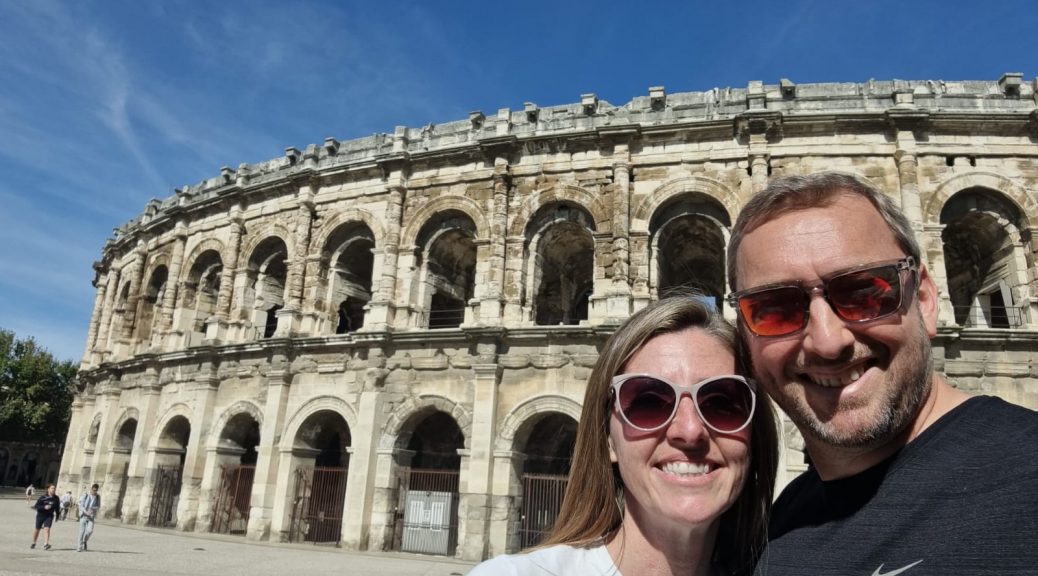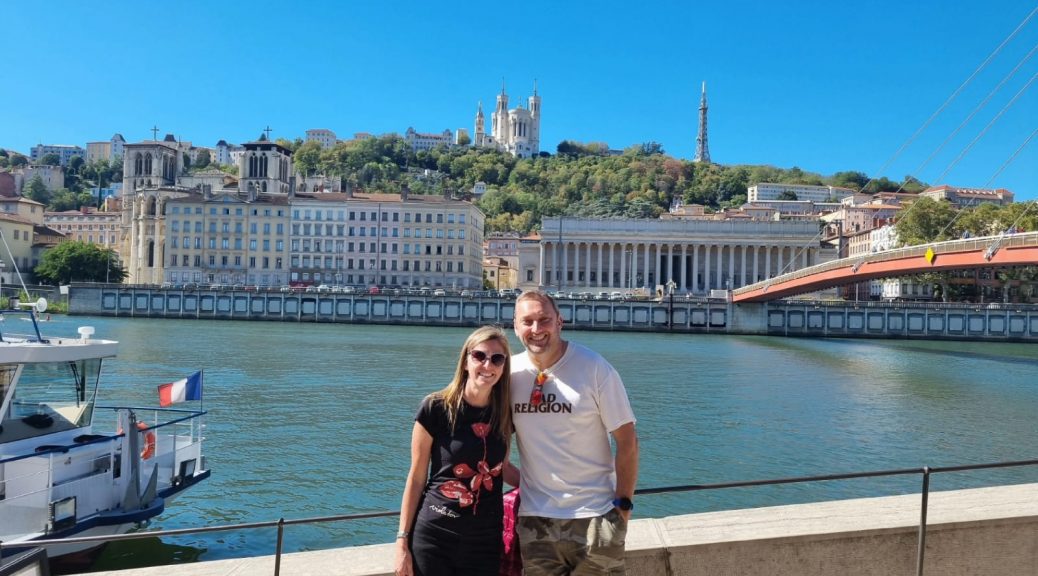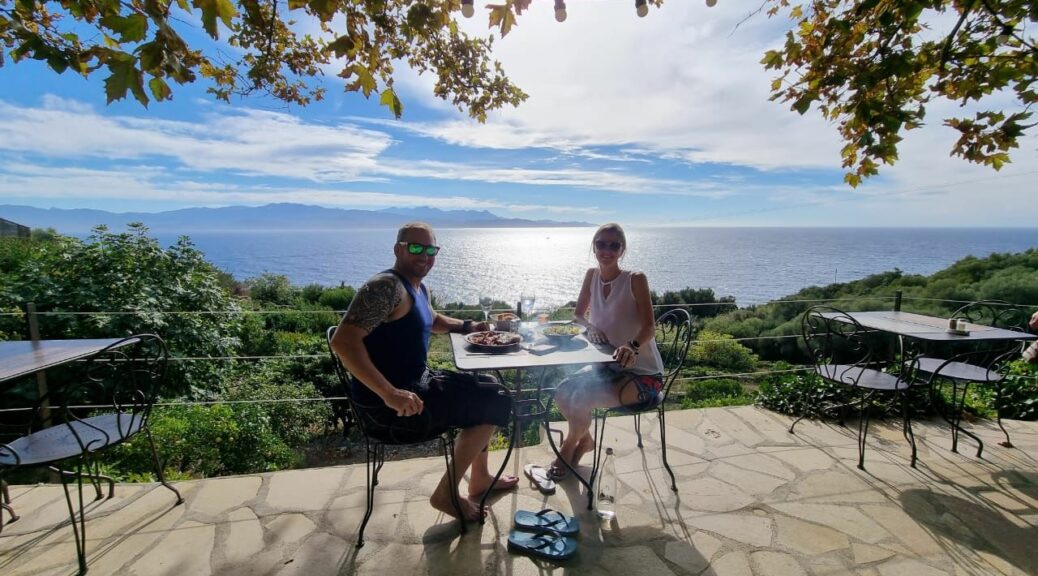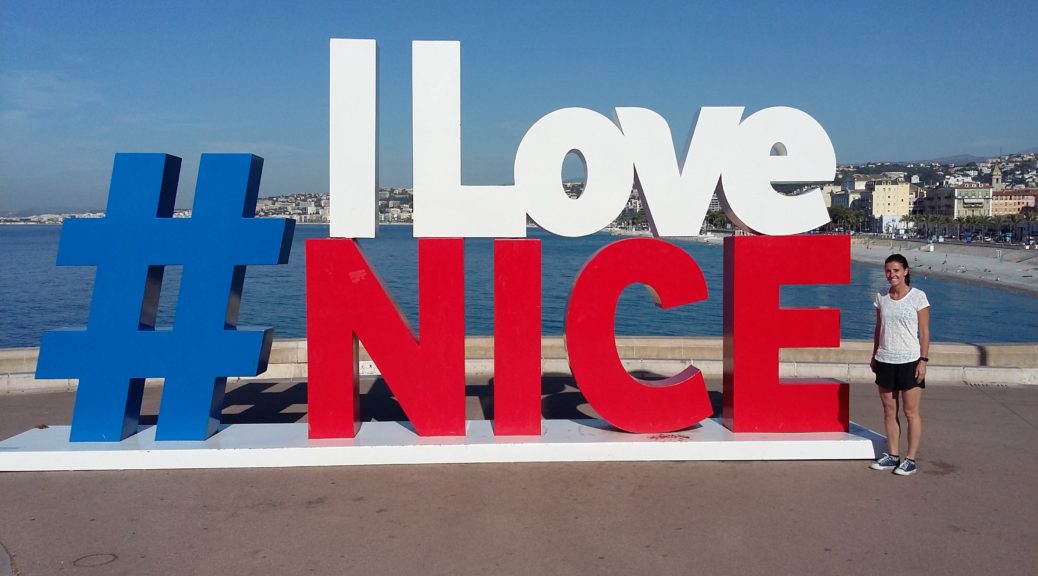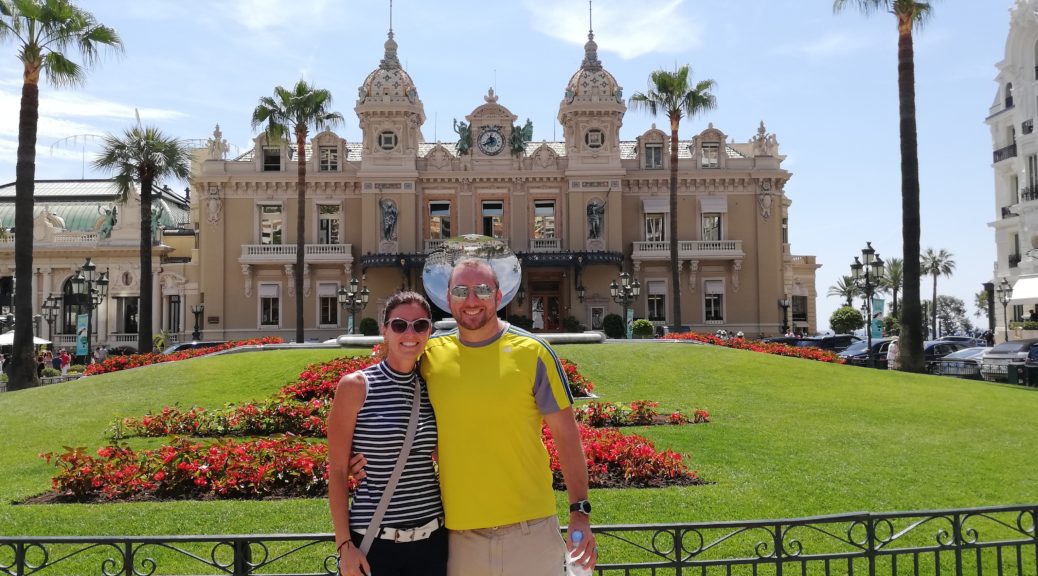PERPIGNAN
02 – 04 October 2023
A 3 hour train ride south from Marseille – and right in the heart of Catalan country – we’d picked Perpignan to be our eye in the storm between the Rugby World Cup game in Marseille and our Blink 182 concert in Barcelona. Home to USA Perpignan rugby union and the Catalan Dragons rugby league teams held appeal for the chaps. The historical significance appealed to all of us.
Though settlement in the area goes back to Roman times, the medieval town of Perpignan seems to have been founded around the beginning of the 10th century. Shortly afterwards, Perpignan became the capital of the counts of Roussillon. It then became French in 1659, by the Treaty of the Pyrenees. Perpignan was a city of refuge in the 20th century – after 1936, for refugees from the Spanish Civil War.
Meanwhile, back in La Ciotat we were managing battles of our own. Having returned home in the early hours of the morning following the 9pm South Africa vs Tonga game in Marseille (and the ensuing traffic jam to get out of the city and back to La Ciotat) the previous night, it was less than optimal to be awoken by a message that our morning train connecting us back to Marseille for our connection to Perpignan was cancelled due to strike action.
We sprang – relatively speaking – into action and started reviewing other options. If we either caught the next train from La Ciotat or caught the bus from the Tourist Office at the end of our road straight into Marseille, we would be just too late for our connection. We tried calling the taxi from Saturday but struggled to get commitment on availability of a car. Our plans were up in the air and we were too tired to worry…
Distracting ourselves with making mega sandwiches with the last remaining groceries (a whole baguette, packet of bacon, thick country ham, sliced cheese, butter, sauce sachets), the plans made themselves when John the Taxi Man called and confirmed he could collect us from the Tourist Office in 5 minutes.
Timing was tight, but he was up for the challenge. Putting foot and swearing ‘Bloody Frogs’ (comically, as a local pure Frenchman in his thick French accent) out of the way, he got us to the Station in Marseille with 11 minutes to spare.
Relieved, we sank into our reserved seats on the train, ready for the next stage of our tour.
Our Airbnb host had advised that she would be dispatching her parents to meet us at the apartment since she’d be at work. Not wanting to keep them waiting, we emerged at the Perpignan Gare with Google Maps at the ready to guide us through the 10 minutes walk.
Our fantastic apartment was situated alongside a canal, which made for an unmissable landmark. Les Parents were waiting at the doorway to our building, ready to welcome us.
Trundling up 3 flights of stairs to our penthouse apartment, we were impressed by our spacious and tastefully decorated home for the next 2 nights. Besides the open plan living area that overlooked the canal, there was a bedroom with small outdoor terrace for Robbie and a massive loft room for Chris and I that ran the length of the apartment.
Les Parents gave us some very basic instructions (to suit our very basic French) and pointed us towards the Old Town.
Following the canal, we were only a few minutes from the historic centre. We would need to self-navigate because there were no walking tours on offer in Perpignan. We easily located the Tourist Office thanks to excellent signage, and procured a trusty city map.
A cursory review of the map told us that our tour would be a quick one. The centre ville is very small and majority of the sights are churches, which for us means a quick photo of the beautiful building and move on. Enough to entertain us for the remainder of the afternoon, but certainly not a two-day affair.
We chatted to the tourist office agent for suggestions for the next day. Of the recommendations, we liked the idea of a short bus ride to a nearby coastal town the most. Armed with info and the bus schedule, we began our city tour of Perpignan.
The agent had warned us that Monday in Catalan country is like a Sunday and not to expect too much to be open. Combined with siesta time, the town was very quiet. Consequently, our walking tour was concluded exceptionally quickly!
Never at a loss for things to do when a meal could be had, we followed directions to the central Place where we’d been told that restaurants serve all day everyday.
We’d worked up quite an appetite, so were sold on the first approach. The host at Hippopotamus only had to get eye contact to seal the deal thanks to the illustrated menu boards at the entrance that promised it to be an excellent grillhouse.
Being a ‘Sunday’ warranted a fantastic roast chicken and roast potatoes feast served in a hot skillet with a rich savoury gravy. And with fresh bread and butter, obviously.
After our leisurely late lunch, we headed in the other direction to explore the new town. Now toward the end of the working day, there was a lot of traffic and people on the move.
Once we’d visited places of cultural interest, we indulged in a visit to the local Irish pub, O’Flaherty’s. En route we noticed – Monday or no Monday – how the city had come back to life again.
Sign boards outside pubs showed operating hours to commonly be 5pm to midnight or beyond every night of the week, so Perpignan clearly has a vibrant and social nightlife culture. Nothing rowdy; mostly tables of 2 or 3 people, sipping drinks and nibbling tapas.
It was really pleasant to pass a couple of hours soaking in the atmosphere and planning our next steps. And it was always appreciated to be able to walk home, taking the long way around to walk along the canal.
Almost home, we walked past a Tibetan sidewalk cafe (of no more than 4 tables) that smelled so good, we had to stop.
The owner effortlessly convinced us to try his dumplings and sushi. Although the menu was a combination of traditional Tibetan fare and other Eastern crowd-pleasers, the owner was completely authentic. He’d been a monk in his homeland, Tibet, before he made his way as a refugee to Perpignan in the late 90s.
He told the story quite casually and was more interested in us enjoying the dumplings and a good glass of rosé than being impressed by his life story.
TUESDAY
As advised, we would be spending the day in Colliore, some 30km away on the coast. Situated in the Roussillon province, the area had been of consequence as a medieval administrative court and been home to royals from 1659 to around the 1790s.
There was a bus every hour or so that could be caught at the Gare. We made our way up to the station in good time to catch the 11h15 bus. It was only when the wrong bus arrived at the bus stop that we realised we were at the wrong bus stop entirely. Fortunately I’d checked with the driver as we boarded the bus or who knows where we would have ended up!
The driver directed us to a bus terminus on the other side of the train station and we killed the remainder of the wait with a coffee in the station.
After a very scenic bus trip – a bargain at €1 each! – we alighted in a precious seaside town. With a selection of seaside eateries, we set about the now-urgent business of lunch.
Mussels and calamari and prawns were the order of the day to match the setting. Collioure being in the heart of Catalan country and very close to the Spanish border, the menu had influences from both countries. A great combo!
From our vantage point on the promenade we could see the bowl of mountains that cupped Collioure, just as the agent described. We could also see the impressive Royal Castle that stretched around the left side of the harbour and hid the old town behind its massive wall.
Finishing up our lunch, we took a stroll around the old town, down to the harbour and along the jetty to the entrance of the port. This allowed a wonderful view back on the charming hamlet and the mountain range backdrop.
Mission accomplished with our relaxing afternoon, we caught the bargain bus back to Perpignan. We disembarked in town to gather some supplies and allow for a stroll back to our apartment.
Having procured a bottle of wine and a bottle of cava, we enjoyed sundowners on the small terrace adjoined to Robbie’s room.
We would probably have been there for a lot longer had it not been for the neighbour cooking up a storm. The delicious wafts of onions and garlic teased us to the point of action and motivated us to find something cheap ‘n cheerful for dinner.
We’d seen signs for naan kebabs on our travels and were curious about the combo since we loved both but had never experienced them together.
Not hard to find, we finally solved the mystery at a place called Cheese Naan. The result was a soft round naan rolled into a cone and piled high with delicious fillings ranging from tandoori to kebab to cordon bleu. A real mash of cultures!
It was still relatively early so there was time for a spot of Cava in the Catalan Dragons’ home bar and bistro. And, of course, making a little time to stop in for a final glass of rosé with our Tibetan friend.



